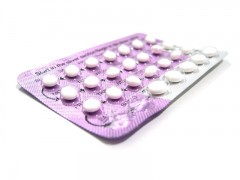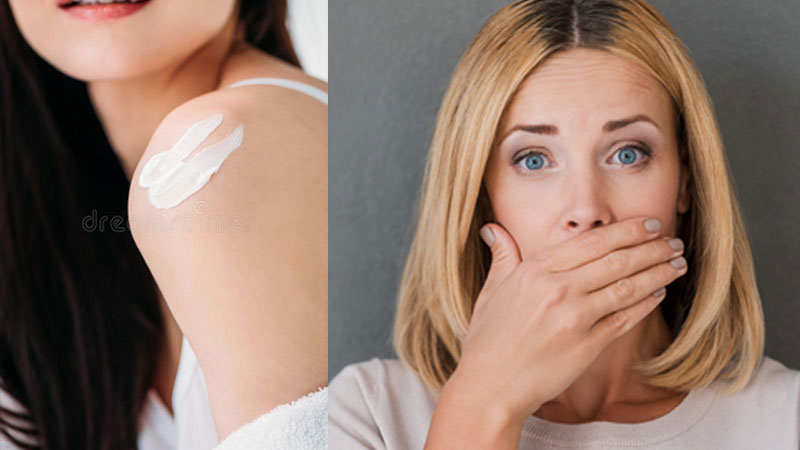
Low Testosterone in Women: Causes, Symptoms and Treatments
Low testosterone in women can be a big issue for both wellness and physical performance. It not only ruins your progress in the gym but can seriously impact your life and health too.
Gone are the days when we thought that higher natural testosterone levels would lead to masculinity, huge slabs of bulky muscle and facial hair that was worthy of the circus.
Testosterone is a key part of femininity!
We now know that through exercise, nutrition and the right supplements you can create a lean, athletic and feminine physique that shows both your strength and your female power. It’s all about getting those hormone levels just right.
Low testosterone is an issue for many women.
But what causes it and why is it so bad for health and sports performance?
We find out…
Article Preview:
- Testosterone is an important hormone for women, regulating everything from menstrual cycles and mood, to energy levels and libido.
- More and more women are suffering from low T – as many as 90% over the age of 45.
- Symptoms of low testosterone in women are serious and range from increased risk of metabolic disease and obesity, to depression, anxiety and cognitive decline.
- You can build up your hormone levels with the right supplements, lifestyle changes and exercise program.
What is Testosterone: An important hormone for female health
Testosterone isn’t just an alpha man’s hormone. It’s important for female health, well-being and physical performance too. We all need it.

‘T’ is often referred to as a ‘male’ only hormone. But that couldn’t be further from the truth.
Women need normal levels of testosterone to regulate metabolic rate, muscle mass, bone health, libido, mood and energy levels.
Testosterone is classed as a steroid hormone because it’s formed from cholesterol in your body. It has both anabolic and androgenic effects. These include:
- Regulation of muscle and bone mass
- Controls reproduction
- Lowers your risk of heart disease, dementia, osteoporosis and metabolic syndrome
- Boosts libido and sex drive (which peaks during ovulation when you’re most fertile)
- Decreases fat mass
In men, T is produced in the testes. You however, make testosterone in 3 different parts of your body. These are the
- Ovaries
- Adrenal glands
- Peripheral tissues within your body
What are normal testosterone levels in women?
Find out more about normal testosterone levels in women here.
In men, high T levels help to boost their masculinity. Think of the most alpha, attractive dude you can (we’ll wait).
He’s lean, muscular, assertive and oh so sexy. Chiseled jaw, thick stubble and a deep, booming voice. The full works.
His testosterone levels are between 300-1,000 ng.dL. He oozes the stuff.
But what about us girls?
Normal hormone levels for women are only 25-70 ng.dL.
The reason we manage to maintain our femininity is that we have 10-15 times lower T levels than our hunky male counterparts.

Women with Low Testosterone
By the age of 45, as many as 90% of women suffer from low T.
There’s a serious issue going on with modern women. Our hormone levels are plummeting!
Currently, 90% of women in the world aged over 45 suffer from clinically low androgen hormones. That’s a huge percentage.
The biggest drop occurs during the ages of 20-40.
Some of the health issues caused by low T include:
- Higher risk of incontinence
- Loss of menstrual cycle and infertility
- Decreased stamina and endurance due to loss of red blood cells
- Increased anxiety, irritability and depression
- Obesity – especially an increase in belly fat
- Loss of libido and ability to orgasm
- Poor sleep patterns, fatigue and fall in energy levels
- Loss of muscle and bone cells
The epidemic which is low T in women is frightening. The list of issues above isn’t even exhaustive either.
Factor in that women with clinically low testosterone have a lower quality of life and are at risk of early death, and all of a sudden, the issue becomes pretty real.
What are the causes of low testosterone in women?
Luckily, many of the causes of low testosterone in women are modifiable. With the right interventions you can reclaim your femininity, confidence and mood.
The exact reasons why your hormone levels might be lower than optimal could be varied.
But science tells us that there are a number of common causes of low testosterone that you need to be aware of.
Here’s what you need to know…
Oral contraceptive

With as many as 60% of females opting for the oral pill, it’s the most popular type of contraceptive out there.
It works by suppressing sex hormones such as estrogen and progesterone but can also have a dramatic effect on testosterone levels too. More so if you take the pill for extended periods of time
Oral contraceptive can really take its toll on hormonal balance.
The main cause of low testosterone in females from oral pill is that it elevates SHBG levels to an uncontrollable concentration.
This is a ‘scavenger’ protein that travels up and down your blood, looking for testosterone. And once it finds T, it clings to it in a tight bear-hug manner, essentially stopping your body from using it.
Low progesterone levels
Your menstrual cycle is controlled by several hormones. all working in synergy to control your period, ovulation and phases of cycle throughout the month.
Progesterone is important as it helps you prepare for pregnancy during the luteal (last couple of weeks) phase of your cycle, as well as regulating the endometrium lining of your uterus.
What you might not know though is that progesterone and testosterone levels are closely linked in women.
When progesterone levels fall, so does testosterone. This is because some progesterone converts into androstenedione and then testosterone in your body.
If there isn’t enough progesterone, it’s difficult to make sufficient amounts of anabolic hormones too.
Ageing
One unfortunate consequence of ageing is that your body can begin to function sub-optimally.
Your skin begins to lose its elasticity, your muscle and bone mass can decrease if you aren’t active and you’ll gradually lose the healthy body composition you once had.
By the time you reach the menopause, your testosterone levels could have halved. Your ovaries struggle to remain as hormonally active, and your pituitary gland doesn’t fire messages as well as it used to.
But there are ways to fight back and ageing doesn’t always mean you’ll suffer from low T.

Other reasons
- Adrenal insufficiency – essentially your adrenal glands can’t produce enough anabolic hormones
- Early menopause
- Genetics – some women don’t produce enough DHEA or DHEA-S – important precursors to testosterone
- Hypopituitarism – your pituitary gland can’t signal your body to make enough testosterone
- Surgical removal of ovaries
How to diagnose it – how do you know you’ve got low T?
Identifying low circulating hormones early on is key to fixing the issues.
Some of the more common symptoms of low testosterone in females include:
- Low mood, anxiety and depression
- Reduced libido, sex drive and satisfaction (you can’t reach orgasm as well as you used to)
- Loss of energy, irritability, lethargy and constant tiredness
- Loss of muscle mass
- Increased body fat
How is low testosterone in females diagnosed?
Unfortunately, many women choose not to get checked out for low hormone levels. This can lead to a ‘suffer in silence’ mentality that will leave you looking and feeling at your worst.
For your health practitioner to say you’ve got low testosterone, you’ll need to have some blood tests.
Dependent on your doctor, you might be sent for these tests on a few occasions across your menstrual cycle, as fluctuating hormone levels can affect the results.
If your total testosterone falls below the low-end cut off of 25 ng.dL you’ll be diagnosed as having low testosterone.

What are the treatments?
Don’t panic. With the right diet, supplements and lifestyle plan you’ll correct your hormonal deficit in no time.
More and more women are suffering the ill effects of clinically low T. But before you worry, there are loads of treatments available to correct the issue – and most are just about your lifestyle.
In 2014, clinical guidelines were released by the ESCP task force, directed specifically at women with ‘androgen deficiency’.
While they informed health professionals to stop giving women synthetic testosterone drugs sue to the risk of illness and unwanted side effects, they did make several recommendations.
- Eat a healthy, balanced diet
- Prioritize sleep
- Reduce unwanted stress
- Exercise regularly
Some health practitioners are still prescribing dangerous drugs
Testosterone replacement in women is a controversial subject. Doctors are still prescribing testosterone cream, aggressive TRT and drugs such as DHEA.
The problem is that many of these drugs can cause adverse side effects, making matters much worse.
Many prescription drugs can result in the same symptoms as high testosterone in women:
- Hirsutism
- Loss of menstrual cycle
- Deepening of the voice
- Extra muscle mass and bulk
- Infertility
Natural testosterone boosters are a safe alternative, designed to fix your low testosterone
Supplements such as testosterone boosters use the power of natural nutrition to ignite testosterone production and put an end to your androgen deficiency.
Containing ingredients such as vitamin D3, zinc and magnesium, T-boosters give you all of the benefits of replacement therapy without the harsh and dangerous side effects.
Read more about how testosterone booster supplements can help you in our honest, no-bull Best Natural Testosterone Boosters Review for Women.
Final word
Low testosterone in women is a common problem that’s affecting more and more women every year.
Without treatment, poor hormone balance leads to ill health, decreased libido, zero energy and a whole host of issues that affect the way you look… and feel.
But all is not lost. With the right supplements, diet and lifestyle changes you can reclaim the old you and put a smile on your face once again.
And after all girl, that’s what’s most important.
Enjoyed this article? Read these related titles:
- Should you take a pre-workout before running or cardio?
- 7 ways to speed up muscle recovery and put a stop to DOMS
- A girl’s guide to metabolic conditioning



